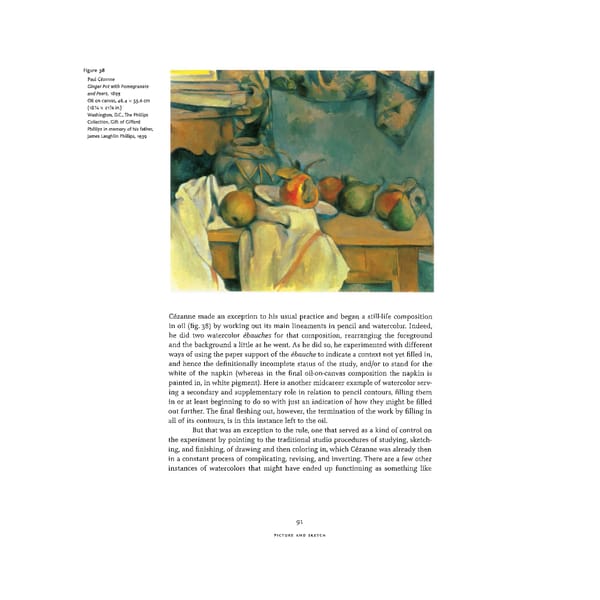Figure 38 Paul Cézanne Ginger Pot with Pomegranate and Pears, 1893 Oil on canvas, 46.4 x 55.6 cm (i8V4X 21% in.) Washington, D.C., The Phillips Collection, Gift of Gifford Phillips in memory of his father, James Laughlin Phillips, 1939 Cézanne made an exception to his usual practice and began a still-life composition in oil (fig. 38) by working out its main lineaments in pencil and watercolor. Indeed; he did two watercolor ébauches for that composition, rearranging the foreground and the background a little as he went. As he did so, he experimented with different ways of using the paper support of the ébauche to indicate a context not yet filled in, and hence the definitionally incomplete status of the study, and/or to stand for the white of the napkin (whereas in the final oil-on-canvas composition the napkin is painted in, in white pigment). Here is another midcareer example of watercolor serv- ing a secondary and supplementary role in relation to pencil contours, filling them in or at least beginning to do so with just an indication of how they might be filled out further. The final fleshing out, however, the termination of the work by filling in all of its contours, is in this instance left to the oil. But that was an exception to the rule, one that served as a kind of control on the experiment by pointing to the traditional studio procedures of studying, sketch- ing, and finishing, of drawing and then coloring in, which Cézanne was already then in a constant process of complicating, revising, and inverting. There are a few other instances of watercolors that might have ended up functioning as something like 9l PICTURE AND SKETCH
 Cézanne in the Studio: Still Life in Watercolors Page 105 Page 107
Cézanne in the Studio: Still Life in Watercolors Page 105 Page 107